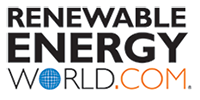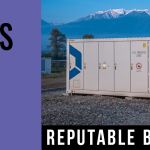 Having been subject to discussion for years within the academic sphere, energy storage projects have become a topic of high interest to energy sector focused investors in recent years.
Having been subject to discussion for years within the academic sphere, energy storage projects have become a topic of high interest to energy sector focused investors in recent years.
Decreasing cost curves, changing regulatory environments within the energy markets such as deregulation and shifts away from subsidised renewables to market pricing modes, and evolving software capabilities, are increasing investor confidence in energy storage investments and result in increased demand for investment opportunities.
While this seems to be true especially for more mature renewable energy markets like Europe, the United States and several others, investors are facing the problem that energy storage projects as investments are – in most cases – discussed on a very abstract basis. Only considering the “big picture” and seeing the project as a future pillar of the energy market leaves out details such as the complexity coming with energy storage investments in practice.
In my opinion, the propensity to drastically reduce complexity by discussing energy storage as high-level topic has developed based on two major factors:
Firstly, energy storage is still a new topic in the market compared to the long history of energy generation and transmission. Hence, while accumulators and especially batteries seem to be part of consumers’ lives ever since, the discussion about energy storage as a viable part of the electricity market structure is relatively trendy and new. In addition, due to the high diversity of technology types and their evolution, economies of scale and market consolidation (as seen currently in the photovoltaic market) are not yet reached. This leads to different potentials, resulting in an ultimate mess of investment cases. Supported by the fact that storage investments are often declared as a “venture capital topic”.
Click Here to Read Full Article
read more
 At Massachusetts Institute of Technology’s (MIT)
At Massachusetts Institute of Technology’s (MIT)  Utilility Integrated Resource Plans (IRPs) are beginning to catch up with the growth of energy storage.
Utilility Integrated Resource Plans (IRPs) are beginning to catch up with the growth of energy storage. This morning, the Energy Storage Association released its whitepaper “
This morning, the Energy Storage Association released its whitepaper “ Saft explains how microgrids that combine diesel generators, renewable energy resources and lithium-ion (Li-ion) energy storage can enhance security of supply while reducing fuel costs and greenhouse gas emissions. When an energy storage system (ESS) is added, an operator can maximize the contribution of renewables, increasing the penetration of PV power and allowing diesel-off operation. It is possible to realize fuel savings of 50 to 75 percent. Li-ion battery systems have emerged as the technology of choice for energy storage. This is due to their high energy density that enables significant levels of storage capacity to be packed into a relatively compact footprint. Li-ion ESSs are now able to store energy at the megawatt scale, and integrated containerized systems can be connected in parallel to deliver multiple megawatt-hour storage capacity.
Saft explains how microgrids that combine diesel generators, renewable energy resources and lithium-ion (Li-ion) energy storage can enhance security of supply while reducing fuel costs and greenhouse gas emissions. When an energy storage system (ESS) is added, an operator can maximize the contribution of renewables, increasing the penetration of PV power and allowing diesel-off operation. It is possible to realize fuel savings of 50 to 75 percent. Li-ion battery systems have emerged as the technology of choice for energy storage. This is due to their high energy density that enables significant levels of storage capacity to be packed into a relatively compact footprint. Li-ion ESSs are now able to store energy at the megawatt scale, and integrated containerized systems can be connected in parallel to deliver multiple megawatt-hour storage capacity. Solar power is potentially the greatest single energy source outside of controlled nuclear fusion, but the Sun is literally a fair weather source that relies on daytime and clear skies. To make solar energy a reliable, 24-hour source of energy, a team of scientists at Sweden’s Chalmers University of Technology in Gothenburg is developing a liquid energy storage medium that can not only release energy from the Sun on demand, but is also transportable.
Solar power is potentially the greatest single energy source outside of controlled nuclear fusion, but the Sun is literally a fair weather source that relies on daytime and clear skies. To make solar energy a reliable, 24-hour source of energy, a team of scientists at Sweden’s Chalmers University of Technology in Gothenburg is developing a liquid energy storage medium that can not only release energy from the Sun on demand, but is also transportable. Panasonic Corp will invest more than 30 billion yen ($256 million) in a New York production facility of Elon Musk’s Tesla Motors to make photovoltaic cells and modules, deepening a partnership of the two companies.
Panasonic Corp will invest more than 30 billion yen ($256 million) in a New York production facility of Elon Musk’s Tesla Motors to make photovoltaic cells and modules, deepening a partnership of the two companies. Sam Stranks, an experimental physicist at Cambridge University, is a firm believer in the power of solar energy to dramatically reduce global carbon emissions. “Solar could well be the solution to our energy needs and getting rid of emissions,” he says. “It’s an infinite source, but expensive to harvest.” Stranks thinks instead of just installing more solar panels, we should focus on making panels that are more efficient. One way to do that is to add a perovskite layer to today’s commercially available solar panels.
Sam Stranks, an experimental physicist at Cambridge University, is a firm believer in the power of solar energy to dramatically reduce global carbon emissions. “Solar could well be the solution to our energy needs and getting rid of emissions,” he says. “It’s an infinite source, but expensive to harvest.” Stranks thinks instead of just installing more solar panels, we should focus on making panels that are more efficient. One way to do that is to add a perovskite layer to today’s commercially available solar panels.



